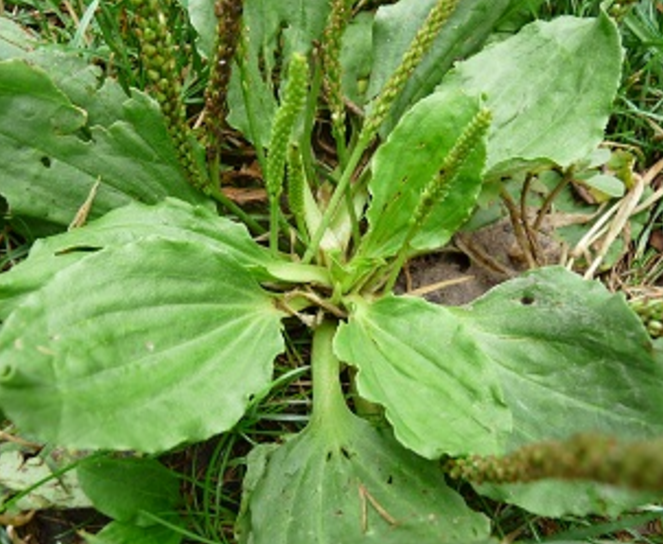Creating an herbal preparation
by Kellie Murphy Cooney
Herbal preparations sometimes require advanced knowledge of the chemistry of herbs, how herbs interact with each other and whether or not one herb offers a synergistic effect to another herb. Sometimes single herbs are used in preparations for a variety of reasons; perhaps only one herb is available at the time, a single herb is chosen for its specific use or advanced knowledge of herbal blending is not known. It may be common practice for a person to visit the health food store or grocery and pick up a tea that contains a blend of herbs. They may base their decision on what the front of the tea box says, for example, “Cold and Flu”, or “Sleepytime”, giving an idea to the consumer of how the herbal preparation may help them. But when an herbal practitioner is tasked with preparing an herbal blend or choosing to use an individual herb for a particular ailment, insight to the phytochemical actions of the herbs is important.
Herbal preparation choices may be different depending on the type or part of herb chosen as extraction will be different between them. For example, in order to extract the phytochemicals from woody parts like the bark, root or stems, usually, require a decoction to be prepared. Leaves can be distilled, steamed or macerated. Depending on the tools available, the time frame when the preparation is needed and the cost involved, a simple, single-herbal preparation may be considered over a multi-herb (cost) or lengthier preparation. These are all necessary to consider when deciding which is the best herb or herbal blend to use.

An herbalist may choose to make a tea as it is a less expensive method of extracting the constituents of the herb over capsule or tincture and is soothing to the client (Blankespoor, 2013). If a tea is chosen, the options should exist whether to use a single herb or blend. This may be practitioner preference or due to the therapeutic result desired. Having an understanding of how the client is able to tolerate the herb is also important as someone with ulcers may not be able to take cayenne or cinnamon orally and should be directed to use a capsule.
An herbalist may decide to use cayenne (Capsicum annuum) as a topical ointment for the relief of painful muscle spasms. Cayenne can be used as a single herb or included in a preparation with Aloe vera, for example, to aid in decreasing the inflammatory process. Cayenne pepper contains up to 1.5% capsaicinoids including 0.11% capsaicin, 6,7-dihydrocapsaicin, nordihydrocapsaicin, homodihydrocapsaicin, and homocapsaicin; fixed oils; carotenoid pigments including capsanthin, capsorubin, alpha- and beta-carotene; steroid glycosides, including capsaicinoids A, B, C, and D; 9-17% fats; 12-15% proteins; vitamins A and C; trace of volatile oil (ACHS, 2014) making it an excellent choice as an anti-inflammatory herb. Cayenne should not be applied to the injured skin (ACHS, 2014). Cayenne can be made into a liniment by using hot oil which contains dried cayenne powder, or an alcohol tincture and applied to the skin using a friction method (ACHS, 2014). When blending cayenne into a poultice, tincture or ointment/cream, the percentage of capsaicinoid should be known as the dosage should vary depending on the desired effect.
Yarrow is a common herb used to heal wounds
Yarrow can be applied topically to the skin and taken by mouth to combat internal illnesses such as inflammation, anxiety, insomnia, heartburn, as a diuretic, to aid against muscle spasms and menstrual cramps and as a sedative (University of Maryland, 2013). The flower, leaves, and stems are collected and used to make medicines when the flower is in bloom (University of Maryland, 2013).

Plantain is also a common herb that is used to heal wounds, specifically insect, and snake bites and is used as an external remedy for rashes and cuts (Wellness Mama, 2015). The leaves can be made into a tea or tincture and taken internally to aid in indigestion, heartburn, and ulcers (Wellness Mama, 2015). The constituents are antibacterial, antitoxic and anti-inflammatory making it an excellent choice for wound healing. A poultice can be made by chewing the leaves then applying directly to a wound. Plantain contains anti-coagulating properties making it a poor choice for clients with a history of blood disorders or clotting issues.

Yarrow and plantain are sometimes used in conjunction with another along with mint and prunella flowers to form a skin salve (PlantMedicine, n.d.). The properties in plantain are healing and yarrow is an anticoagulant. Mint helps to make the concoction smell good and prunella flowers are both healing and contain anti-coagulant properties (PlantMedicine, n.d).
Resources
Blankespoor, J. (2013, June 3). Herbal Infusions and Decoctions – Preparing Medicinal Teas | Blog Castanea [Web log post]. Retrieved from http://blog.chestnutherbs.com/herbal-infusions-and-decoctions-preparing-medicinal-teas
ACHS. (2014). Herbal medicine: cayenne pepper [PDF].
University of Maryland. (2013, May 7). Yarrow | University of Maryland Medical Center. Retrieved from http://umm.edu/health/medical/altmed/herb/yarrow
Wellness Mama. (2015). Herb Profile: Plantain for Wound Healing and Inflammation [Web log post]. Retrieved from http://wellnessmama.com/4638/plantain-herb-profile/
PlantMedicine. (n.d.). For cuts-yarrow and plantain – PlantMedicine. Retrieved from http://plantmedicine.weebly.com/for-cuts-yarrow-and-plantain.html
